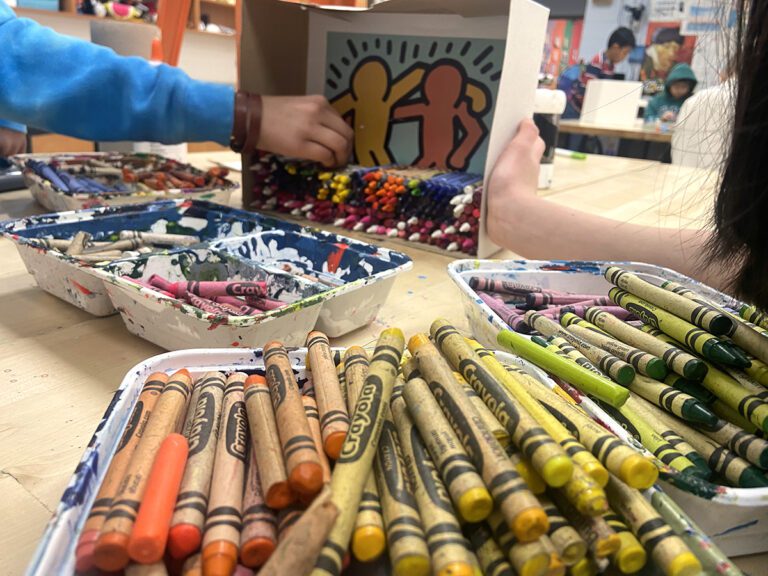
Glass fusing is all the buzz in the art education world these days. It’s an engaging process, connected to STEAM, with a bit of danger mixed in. It can seem complicated and overwhelming, and with all the things art teachers have to do, how do you get started?
First things first: Once you’ve decided to budget for a glass-fusing curriculum, your next step is figuring out what to buy. There are lots of bells and whistles out there for glass artists, but what do you really need and want in the art room?
Choosing Glass
Coefficient of Expansion (COE)
You can’t fuse with any old glass shards. If you are mixing and matching different types of glass, every single project is destined to fail. When buying fusible glass, you have to choose between 90 and 96 Coefficient of Expansion (COE). They don’t expand at the same rate (read: cracking) and it’s impossible to tell them apart. So once you make the choice for your art room–either 90 or 96–stick with it!
I’ve read a lot of opinions about which COE is better, but at the end of the day, they are pretty much the same. The only difference I’ve found that really matters to me as an art teacher is art education catalogs tend to sell COE 90 and companies specializing in glass sell both 90 and 96 COE.
Budget or Convenience?

When ordering glass, it’s easy to become overwhelmed by the choices. First, you need to prioritize- convenience or budget. If you are looking for convenience, you can buy pre-cut chips along with pebbles, stringers, and pre-cut clear bases. You’ll end up paying more for time saved, but hey, time is money, right?

If you prioritize budget over convenience and are okay taking some time to cut up your own glass, buy glass packs with glass sheets as big as 12” x12” of 3mm thick glass and cut it up yourself. It’s easier than you think! You’ll need to purchase a glass scorer (or cutter), running pliers, and pair of mosaic cutters or nippers. I keep a couple handheld dustpans around to sweep up glass shards that are left after cutting.
Non-glass Needs
Kiln Wash and Kiln Paper

Glass will stick to your kiln shelves the same way glaze will, so you MUST kiln wash your kiln shelves. Kiln wash is a powdered mix (or you can buy it pre-mixed) that gets brushed onto your shelves until it is solid.
You’ll also want to buy kiln paper, which I use 2 or 3 times before dumping in the trash. Kiln paper is a powdery paper that will completely prevent glass from sticking to your shelves. I like to buy a large roll and cut it up on my own to save money.
Elmer’s Glue and Toothpicks
Yup. It’s that easy. To attach glass pieces of glass together you use small dabs of Elmer’s glue, which burns off in the kiln during firing. To prevent students from overdoing it, I provide them with small jars and toothpicks.
Metallic Sharpies

Metallic Sharpie doesn’t burn off in the kiln the way regular Sharpie does. Have students write their initials and room code in metallic Sharpie on the bottom of their base before starting.

Now that you have a list of essential materials and tools for trying glass fusing, it’s time to take the plunge! You can see some project ideas and resources here and here, and this kiln firing guide from Skutt will also help you get started.
It can be fun and exciting to delve into new materials right along side your students. It’s the difference between being the lifeguard in your classroom or diving right into the pool!
If you teach glass fusing, what are your go-to materials or tools?
Have you thought about introducing glass fusing? What’s holding you back?
If you would like to see more awesome ideas from Kelly, she will be presenting at the Art Ed Now 2017 Winter Online Conference. Her presentation will include ways she infuses STEAM ideas throughout her TAB classroom. You can read more about it and see all of the presentations right here!
Magazine articles and podcasts are opinions of professional education contributors and do not necessarily represent the position of the Art of Education University (AOEU) or its academic offerings. Contributors use terms in the way they are most often talked about in the scope of their educational experiences.






